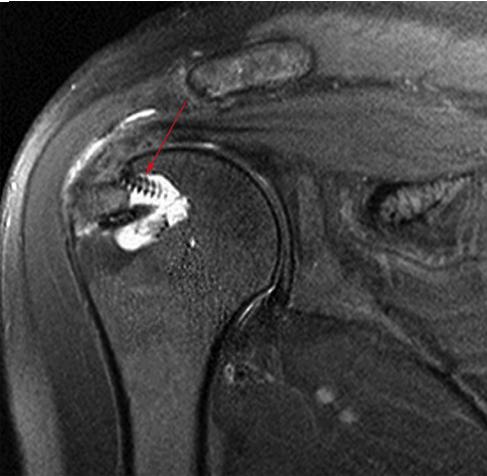Objectives
The objective of this study was to evaluate the incidence of osteolysis around the bioabsorbable and nonabsorbable anchors using serial magnetic resonance imaging (MRI) and to determine the relationship between osteolysis and the retear rate after arthroscopic rotator cuff repair.
Methods
From July 2012 to July 2014, 50 patients [28 men and 22 women; mean age, 56.4 (range: 45–56) years] underwent arthroscopic rotator cuff repair for a medium-to large-size tear with double-row suture-bridge technique. The bioabsorbable anchors used in the medial row comprised hydroxyapatite-polylactic acid enantiomer, and the nonabsorbable anchors in the lateral row were polyetheretherketone (PEEK)-type anchors. All patients underwent MRI evaluation at 3, 6, and 12 months postoperatively to determine osteolysis and identify any retear.
Results
The incidences of osteolysis at 3, 6, and 12 months postoperatively were 1%, 4%, and 6% with nonabsorbable anchors and 13%, 29%, and 39% with bioabsorbable anchors, respectively. The incidences of osteolysis were significantly higher with the bioabsorbable anchors than with the nonabsorbable anchors (P < 0.005 for all three follow-ups). There was no significant difference between osteolysis and non-osteolysis groups regarding the retear rate or retear size (P = 0.189 and 0.069, respectively).
Conclusions
Osteolysis was common around bioabsorbable anchors used for arthroscopic rotator cuff repair, and it also occurred around the PEEK-type nonabsorbable anchors. The incidence of osteolysis of nonabsorbable anchors was significantly lower than that of bioabsorbable anchors. Osteolysis did not significantly affect rotator cuff retear after arthroscopic repair with either bioabsorbable or nonabsorbable anchors.
Level of evidence Level III, Therapeutic Study.



.png)
.png)

